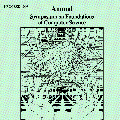We show a linear sized reduction from the Maximum Cut Problem (Max-Cut) with completeness $1 - \varepsilon$ and soundness $1 - \varepsilon^{1/2}$ to the $\gamma$-Approximate Closest Vector Problem under any finite $\ell_p$-norm including $p = 2$. This reduction implies two headline results: (i) We show that any sub-exponential time (classical or quantum) algorithm for the $o(\sqrt{\log n}^{\frac{1}{p}})$-Approximate Closest Vector Problem in any finite $\ell_p$-norm implies a faster than the state-of-the-art (by Arora, Barak, and Steurer [\textit{Journal of the ACM}, 2015]) sub-exponential time (classical or quantum) algorithm for Max-Cut. This fills the gap between the results by Bennett, Golovnev, and Stephens-Davidowitz [\textit{FOCS} 2017] which had an almost optimal runtime lower bound but a very small approximation factor and the results by Dinur, Kindler, Raz, and Safra [\textit{Combinatorica}, 2003] which had an almost optimal approximation factor but small runtime lower bound, albeit using a different underlying hard problem; (ii) in combination with the classical results of Aggarwal and Kumar [\textit{FOCS} 2023] and our quantization of those results, there are no fine-grained reductions from $k$-SAT to Max-Cut with one-sided error, nor are there non-adaptive fine-grained (classical or quantum) reductions with two-sided error, unless the polynomial hierarchy collapses (or unless $\mathrm{NP} \subseteq \mathrm{pr} \text{-} \mathrm{QSZK}$ in the quantum case). The second result poses a significant barrier against proving the fine-grained complexity of Max-Cut using the Strong Exponential Time Hypothesis (or the Quantum Strong Exponential Time Hypothesis).
翻译:暂无翻译



